California has a history of numerous, intense wildfires in remote areas. Many of these have damaged or threatened power generation, transmission, and distribution networks, leading to a statewide framework of mitigation requirements. HeliOps’ Ned Dawson visited SoCal Edison to observe their grid hardening and fire mitigation operations.
After several fires during the last decade that caused severe damage and power disruption, the CPUC (California public utilities commission) now requires utilities to submit an annual WMP (wildfire mitigation plan). Around 380,000 acres were burnt in 2020’s Creek fire alone and the cost to SoCal Edison (SCE) for subsequent network repairs was substantial, and that was only one of many extremely large blazes in recent years. To ensure appropriate air assets are available for firefighting, heavy-lift helicopters are contracted. Coulson provided two Chinooks and an S61 last year and the same is booked for this year. That contract is specifically to protect SCE assets and prevents the aircraft being released from Southern California for the contract’s duration.
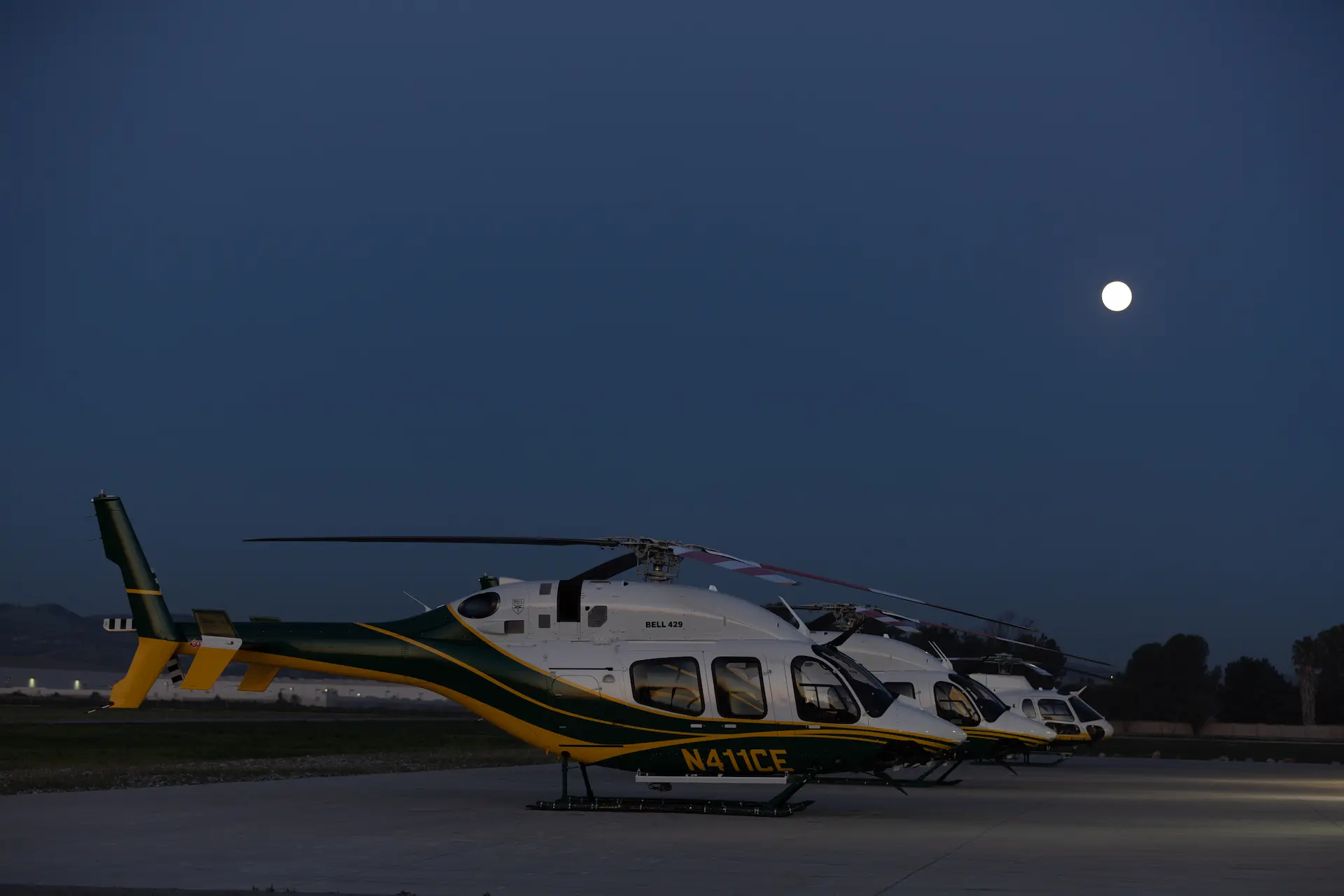
Extremes
California presents the most extreme working conditions for helicopters in the USA. Terrain varies from the lowest point in Death Valley to the 14,000ft peak of Mount Whitney. The Santa Ana wind season runs from mid-October to mid-March, causing severe wind events that can trigger fires, then fan the subsequent blazes into raging wildfires. SCE’s incident management team (IMT) is stood up for predicted wind events, monitoring the event, humidity levels, any circuits that may have to be shut down to prevent fires and dispatching patrols as appropriate. SCE Chief Pilot Torbjorn ‘TC’ Corell is branch director for the IMT and coordinates all flights before forwarding them to dispatch. “We drop everything we’ve got on; we cancel projects and cancel flights to make sure the aircraft are available for what we call a pre-patrol,” he explained.
“The aircraft pick up patrolmen responsible for that area and fly the circuits at risk to check they are safe to shut down, looking for vegetation in the tight corridor below the lines, trees too close, or any other factor that would prevent us safely shutting down the power.” SCE then advises customers by email or text that their power will be shut down for a specified period. The IMT remains active throughout the incident and when the wind dies down, a post-patrol checks for any factors that would impact on a safe power restart.
Aside from event monitoring and response, SCE’s mitigation program includes continuous grid hardening practices throughout the year, which include replacing wood or other pole material with stronger steel or fiberglass poles that have been enhanced for additional wind resistance, and the installation of covered conductors on all distribution lines in fire prone areas. “The fiberglass poles are a lot more expensive, but they don’t burn nearly as easily as the wood poles. Steel poles are even better but they are incredibly expensive. Both steel and fiberglass are much lighter than the wood poles, only around half the weight. We’re also trying to protect the line better by building what we call a smart grid,” Corell related. “Eventually we’ll have sensors on every single pole in the fire-prone areas and whenever a sensor detects and reports a problem or failure, we’ll get a helicopter or drone out there to patrol it.”
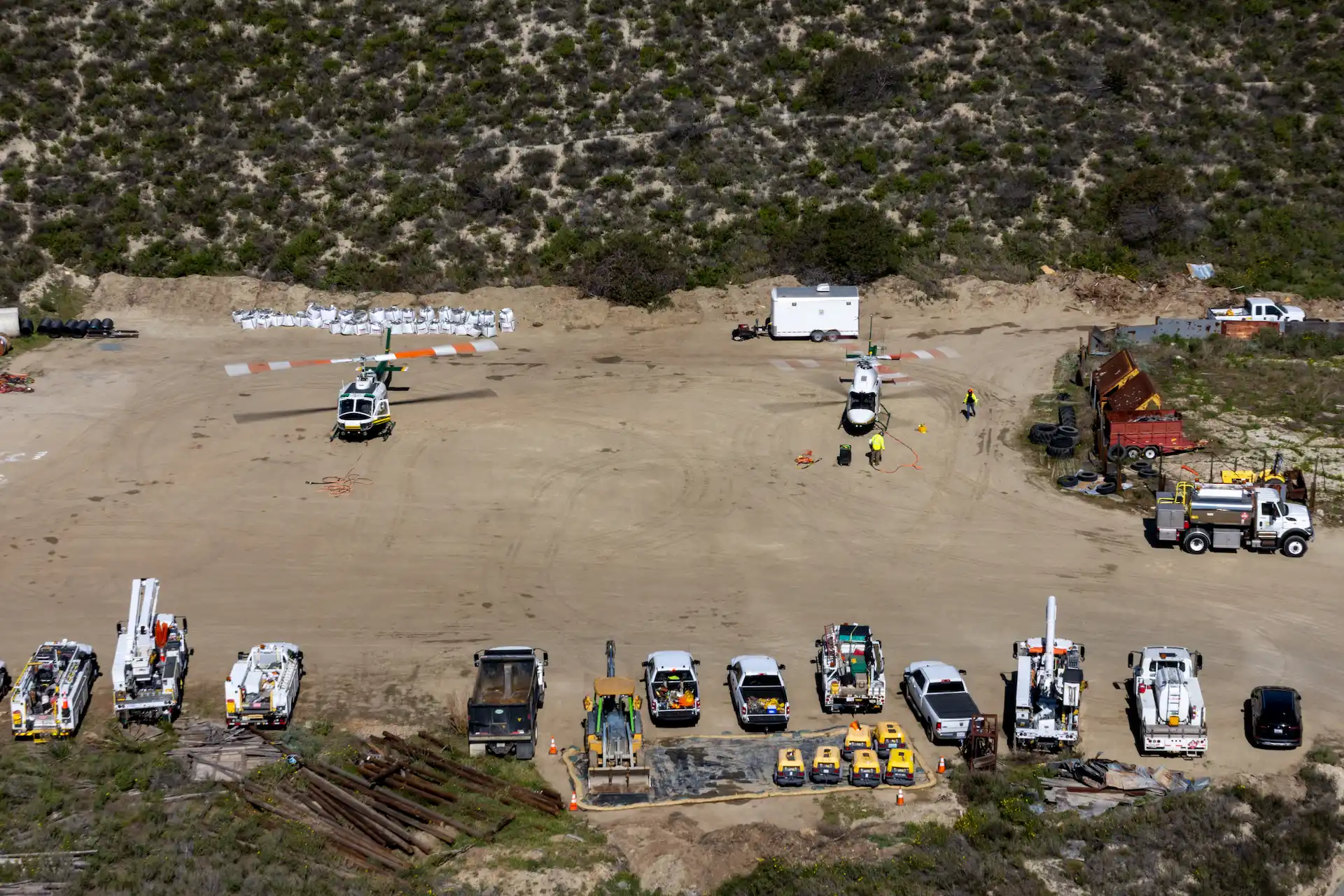
It Takes Time
Each major project can take up to two years, from entering the planning phase to being undertaken. The initial plan blueprints go to the relevant district and logistics and methodology is planned out in detail, including whether helicopter support will be needed. While the whole grid is being reviewed, project priority is given to sensitive, important assets, particularly in fire prone areas and most grid hardening work is on the smaller distribution lines. The larger high-voltage transmission lines are usually on steel structures, positioned much higher than the distribution network and therefore less vulnerable to fire. Before any work begins, the environmental team go out to ascertain what environmental issues need to be addressed in the project plan.
Typical issues could include nesting birds or endangered species, and often dictate the timing window during which a project can be conducted. “They go out and hike the entire area of the project, looking for anything that we could harm during the project. If it can’t be hiked, we go out with the helicopters and do HEC (human external cargo) to deliver them to their worksites. During the project there are also always environmentalists on site to ensure we are following all the rules they’ve set out,” commented Corell, who noted that it was not uncommon for work crews to need to watch out for rattlesnakes and mountain lions.
SCE’s massive service area spans an area of around 50,000 square miles, much of which is in the desert, or in steep and difficult-to-access forested areas. This makes the use of helicopters to build and maintain the company’s infrastructure virtually obligatory, as well as economically efficient. SCE is one of the nation’s only investor-owned utilities to operate its own aircraft operations department, with 27 personnel and a helicopter fleet of one Bell 205, three AS350-B3 A-Stars and two Bell 429s. The substantial volume of work however, means that much of the work is also contracted out to external electrical contractors and a dozen helicopter service vendors, approved by SCE and audited by the company’s own IS-BAO (International Standard For Business Aircraft Operations) accredited auditor. Corell advised that the company is endeavoring to increase the proportion of work handled by its own flight department, as in-house helicopter support is much more affordable than hiring contractors. It also makes it simpler to ensure strict adherence to SCE’s operational and safety protocols, with total quality assurance on training, maintenance and flight operations.
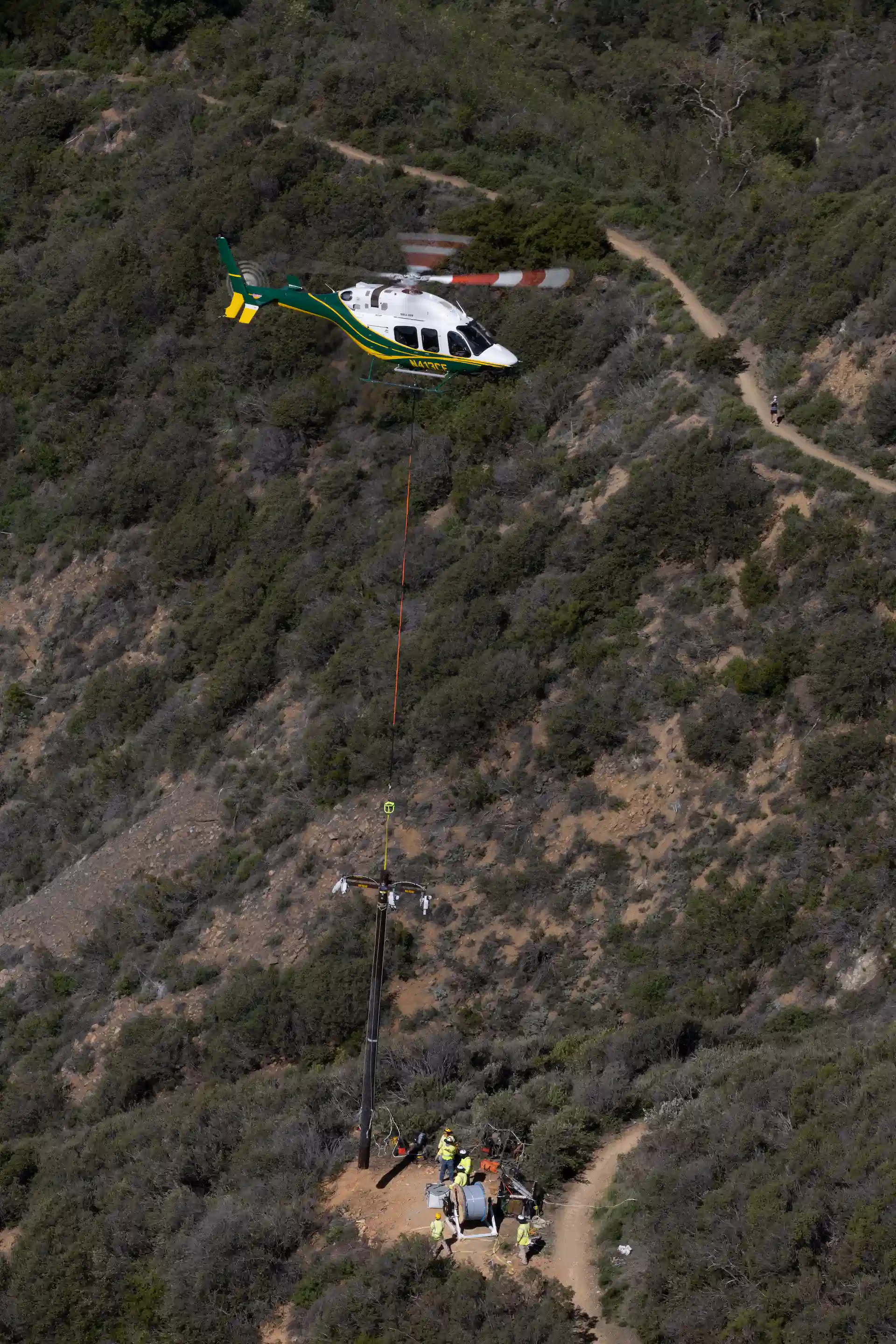
“Here’s the big difference that I see,” Corell expounded. “We are about precision and not production, whereas a contractor is about production rather than precision, because they need to make money. We’re not there to make money, but to support our customers in the field.” He also noted that aside from auditing pilots, maintenance, safety management systems and operational standards, SCE carries out a financial stress analysis on all potential helicopter service vendors, who must also have a minimum of $20 million liability insurance.
In praise of the 429
The flight department’s customers are SCE’s various infrastructure sectors; being the distribution network, the transmission network, and the generation facilities – both hydro and nuclear. Total annual flight hours in-house are currently around 2,000 to 2,500hrs. Flight time on an annual basis is expected to increase the next few years. Including external operators, around 10,000 hours per year are flown on SCE work. The specific aircraft allocated to a project are determined by the tasks required, and the major determining factor is usually the weights involved, whether it be for lifting or line-stringing. “The 205 is perfect for the heavier poles and crew transport, and we can select the A-Star or the 429 for lighter work. If we will be conducting HEC operations, we will always use the 429, as we never do HEC with a single-engine aircraft,” Corell explained.
“Since we got the two 429s two years ago, we’ve utilized them more than our three A-Stars. The 429s have taken over everything that the A-Stars do, and more. We were surprised at the versatility of the aircraft, doing line stringing, crew support, normal external loads, pole setting and HEC, all in one aircraft that operates extraordinarily well in a hot and high environment. The A-Star is a great aircraft but the 429 out-performs it at the same altitude and temperature.”
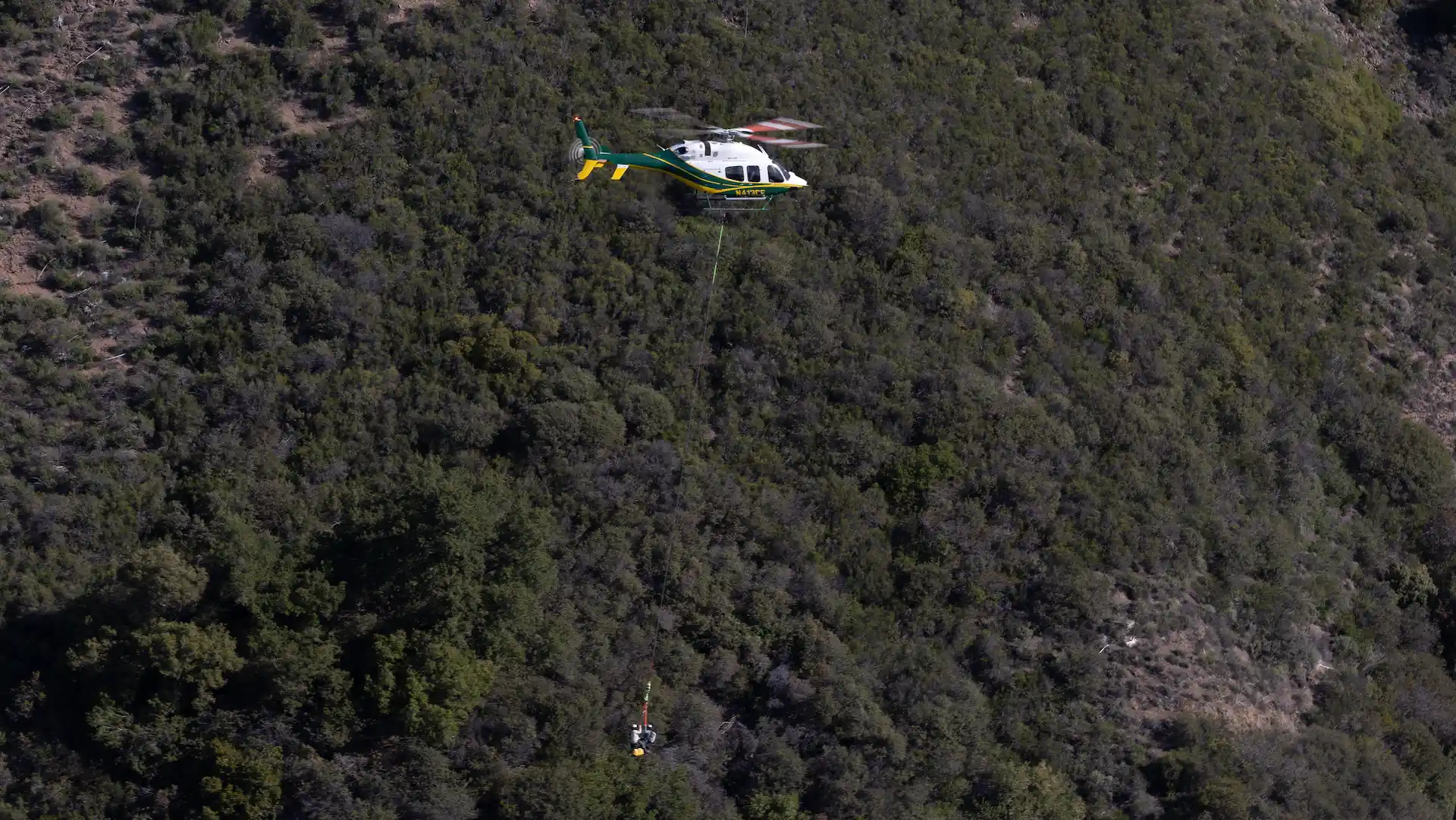
The SCE 429s can lift around 2,400lbs in typical operational conditions (more than the A-Stars) while the 205 lifts between 3,500 and 4,000lbs. From the ground crews’ perspective, the 429 also seems to produce more downwash than the heavier 205, and Corell postulated that it was due to its heavy body and smaller diameter rotor with faster spinning blades. One or two of the department’s four aircraft technical officers (ATO) go out with every helicopter that is deployed to a job. They plan the work, generating and filing a congested area plan with the FAA district office if necessitated by the proximity of people or structures. “We probably file more congested area plans (CAP) than any other operator in Southern California,” noted Corell. “Sometimes we come in and have to evacuate multiple homes, just to set two poles.” The AOTs then formulate a lift plan, which is also sent to the FAA for approval. We’re completely transparent and if they want to come out and observe, even if it’s non-congested. Sometimes they do,” Corell explained. The ATOs then provide aircraft support, driving the fuel trucks with all the rigging equipment, and taking responsibility for all groundwork for rigging and communications.
The bulk of SCE’s 500kv and 220kvpower lines are in the desert, with temperatures around up to 130oF. “If you take those temperatures, and the high altitudes we can operate up to, not every aircraft can perform satisfactorily in our conditions and that’s something we need to consider”. Factors that placed the 429 as a favorable aircraft were its left-hand PIC capability, approved double hook setup, strong conventional tail-rotor and significant price advantage. Corell explained that SCE operated all its aircraft permanently piloted from the left side, to establish a consistent approach and it was more ergonomic and precise for longline operation. “When we got the 429s, other utilities were also looking and since we purchased ours, the 429 has become a popular go-to aircraft for utilities in the US,” he added.
SCE’s new Bells were built at Mirabel and completed at Piney Flats, with Corell reporting that it had been great to work with Bell throughout the program. At Corell’s insistence, he went through a thorough test flight and checkout routine; but only after the SCE mechanics had thoroughly gone over the aircraft.
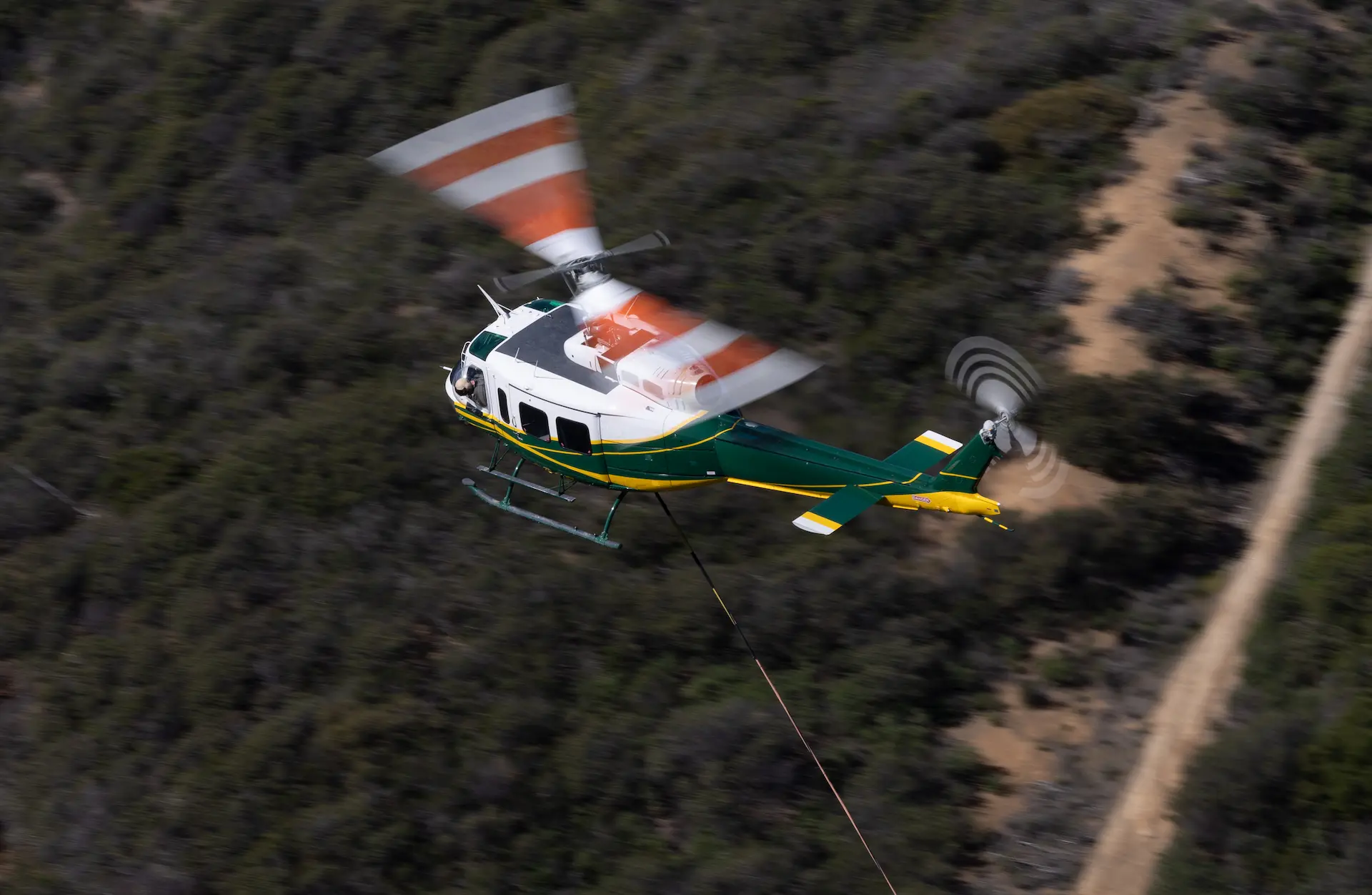
Optioned for the Mission
Options on the 429s include a left-side bubble window, vertical reference indicator, torque gauge, master caution, fire warning and MGT lights with audible gong – all on the left, a HEC-approved double hook system, new three-screen display by Astronautics, left and right-side steps from Aeronautical Accessories, and skid protectors.
“We also have a hoist on one of them and will become operational with that in the fourth quarter of this year. That’s another tool in the toolbox, but HEC will still be our primary method,” Corell advised. He described OEI (one engine inoperative) performance as ‘not great, but fine for what the aircraft are doing’. To optimize performance and payload, empty weight has been kept down to between 4,800 and 4,900lbs. Communications include a 900mHz ground-based truck-type radio common to the company’s ground personnel and vehicles. A simplex channel is used for close-range line-of-sight communication, but repeaters positioned throughout the service territory allow communication on a duplex channel anywhere on the entire SCE network.
The Job
The seven-week project HeliOps’ visited involved four eight-man line crews with a four-man support crew, the helicopters and pilots, and the air-ops support crew. The workday commenced with ‘tailboard’ safety briefings for everybody, detailing and allocating the day’s work and how the helicopter would be utilized. While this project was being carried out in-house with SCE helicopters and ground crews, Corell pointed out that many other concurrent projects around Southern California were being conducted by external electrical contractors and helicopter vendors, doing similar work and flying a wide variety of types ranging from the MD500 to the Blackhawk. The line being worked on was divided into sections, crews were transported to a central location and the 429 came in right behind them to HEC-longline the necessary personnel to each station. The 205 longlined the appropriate poles and crossarms to each site and, once the pole structures were set up, the helicopters strung the lines, and the air-ops work for that section was then complete.
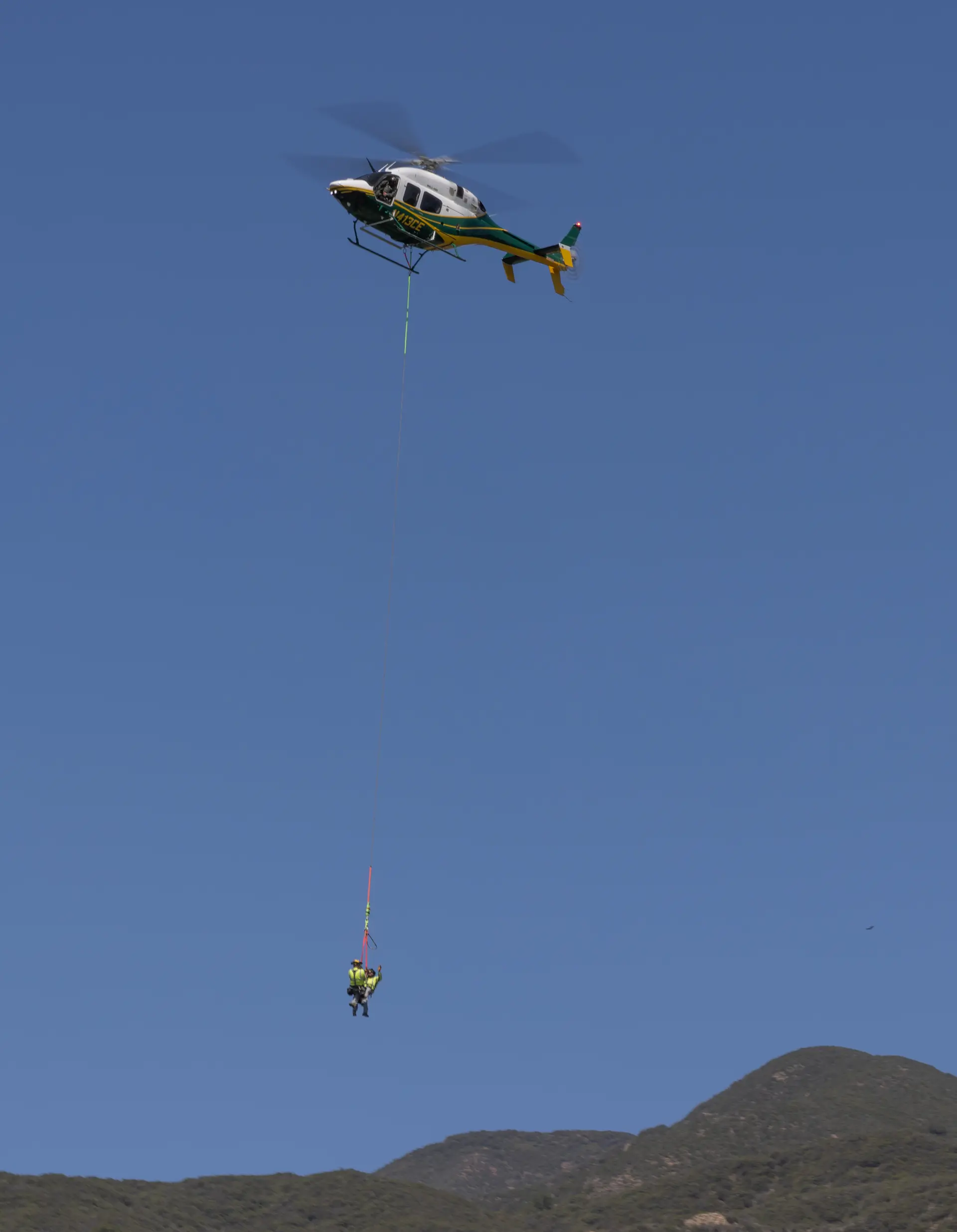
Line-stringing leaves little margin for error, and heavier conductors or longer spans require a lot of pulling power. Additionally, the work entails operating in very close proximity to the terrain environment, right above the steel structures and conductors. Corell stressed this as another safety advantage of the 429, remarking, “If you’re side-pulling in a single-engine aircraft and have an engine failure in those circumstances, where are you going to go? You’re going to crash where you are. With the 429 though, instead of side-pulling we pull with a 50ft line from the primary hook, and use a weight on a swivel, connected to the conductor we’re pulling and that limits the angle. If you lose an engine, because you’re thirty to fifty feet above the work you can still maneuver away, which gives everybody a fighting chance; pilot and ground personnel.” He admits that it is an expensive type to operate in the powerline environment. “We get that. Not everyone has the budget we have or can afford it for this type of work. We started with the EC135 in April 2009 and were the first to use twins for this type of work though, and I’ve personally been very outspoken about how twins should be used. I think we have a responsibility to our linemen, and we have an obligation to mitigate the risk in everything that we do. Bottomline is, safety has no price. It has certainly spread since then, with a number of utilities and contractors now introducing twins.”
Workload
Pilot workload can be intense, and is often somewhat unpredictable, as Corell outlined. “Sometimes you can fly for a couple of hours and then stand by for an hour, but other times you come back to the main LZ and shut down, and literally two minutes later they need you again. That means you can sometimes have fifteen or twenty starts in a day.” Such frequent starts are not good for the aircraft so every effort is made to ascertain if any flights will be required in the short term. If the machine will be needed in, say, ten minutes, it will remain idling on the ground for that period to eliminate the extra start-up.
Seventy-five feet is the preferred longline length for most HEC work, as it permits great precision, minimal downwash, and low risk of spinning at the end of the line. Shorter and longer lines are always available though in case particular circumstances at a site require a different approach. The dielectrically clean (non-conducting) HEC lines are kept separate from the cargo lifting lines and are of a non-stretch PVC-coated 12-strand synthetic design, stored in buckets and never permitted to touch the ground. “They are inspected every single morning before use, with a checklist covering everything from thimbles, to master rings, snap rings, the line itself and its cover. It all has to be inspected and signed off as ready to go,” Corell added. He pointed out that, unlike legacy aircraft such as MD500s and A-Stars, the 429 has onboard ECUs and engine FADEC systems, so it is critical to completely isolate the aircraft from any external electrical charge when conducting energized work. All the HEC work is currently conducted on non-energized circuits.
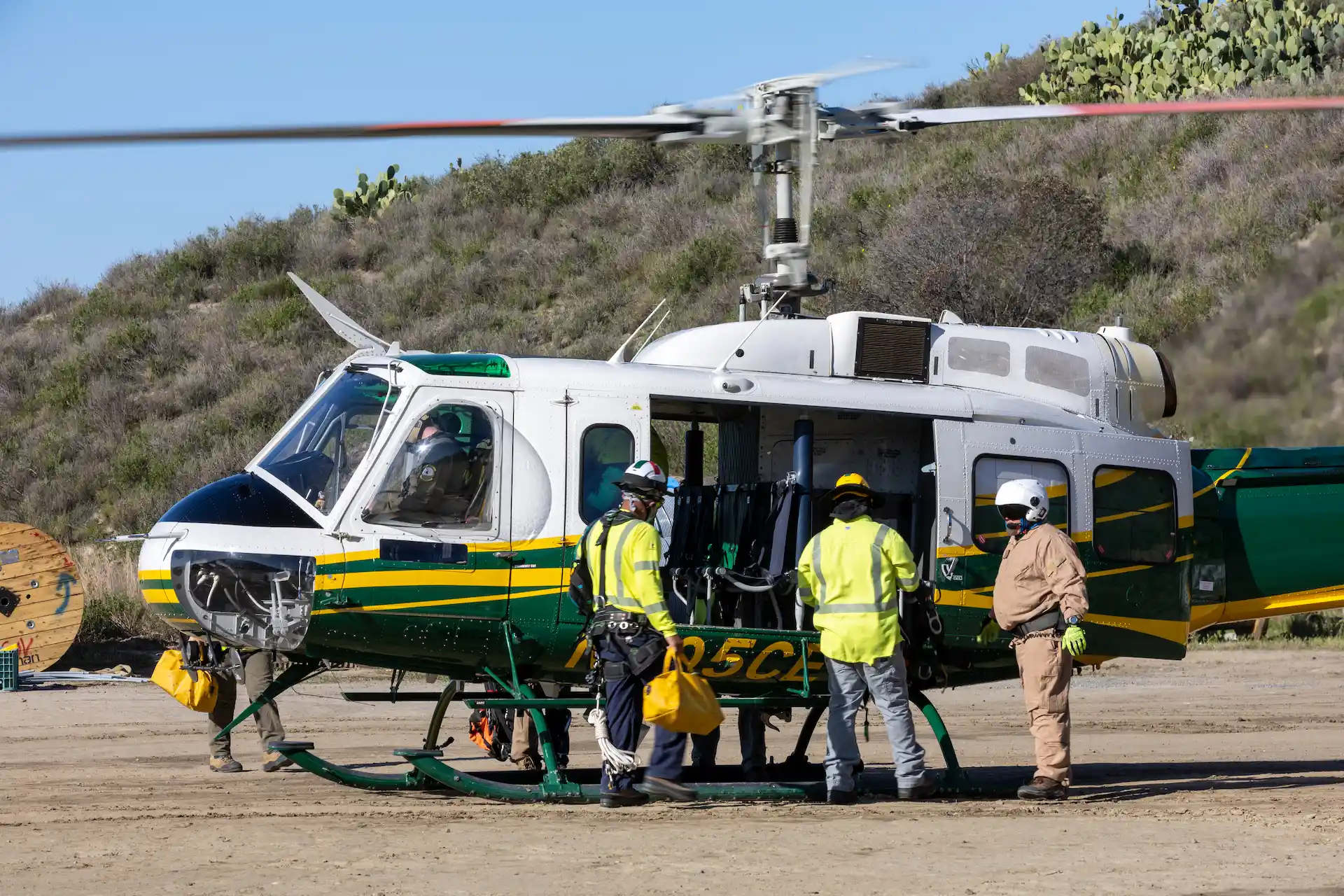
Future
The future already holds further planned advances in operational capability. A new work method being introduced this year is X-ray inspection of splices in the transmission lines. An A-Star or 429 will carry a technician to operate an X-ray camera system, which is lowered in a cage assembly onto the power line to capture X-ray images of the spliced joint and detect any deterioration or faulting. Corell observed that it will be demanding, tedious and difficult work, coming in on a conductor mid-span, with absolutely no vertical reference. Very close to approval is a program that will enable the flight department to train contractor linemen for HEC operations under the 429s, as the company’s aircraft are currently only permitted to carry SCE’s own linemen. “That will mean that we take some work away from operators. We will always have a need for external operators. However, expanding our work methods will translate to operational efficiencies and save us money.”
The flight department is looking to expand both personnel and aircraft numbers within the next two or three years and it is envisaged that two additional helicopters will be acquired, of an as-yet undetermined type.
The need for a twin with the desired lift capacity leaves a very short list of suitable aircraft, as there are few medium utility twins currently manufactured. Corell would like to see more 429s, but the aging single-engine legacy 205 will also need replacement and there is little in that category. Single-engine aircraft will still have a place in the fleet, with new LIDAR and HD camera survey work to be carried out by the A-Stars, which Corell considers to be great aircraft that have given terrific service for many years, outperforming all competitors at SCE’s operational altitudes. The A-Stars are getting old however, and are now in a cycle to be replaced, with their eventual replacement also yet to be determined.
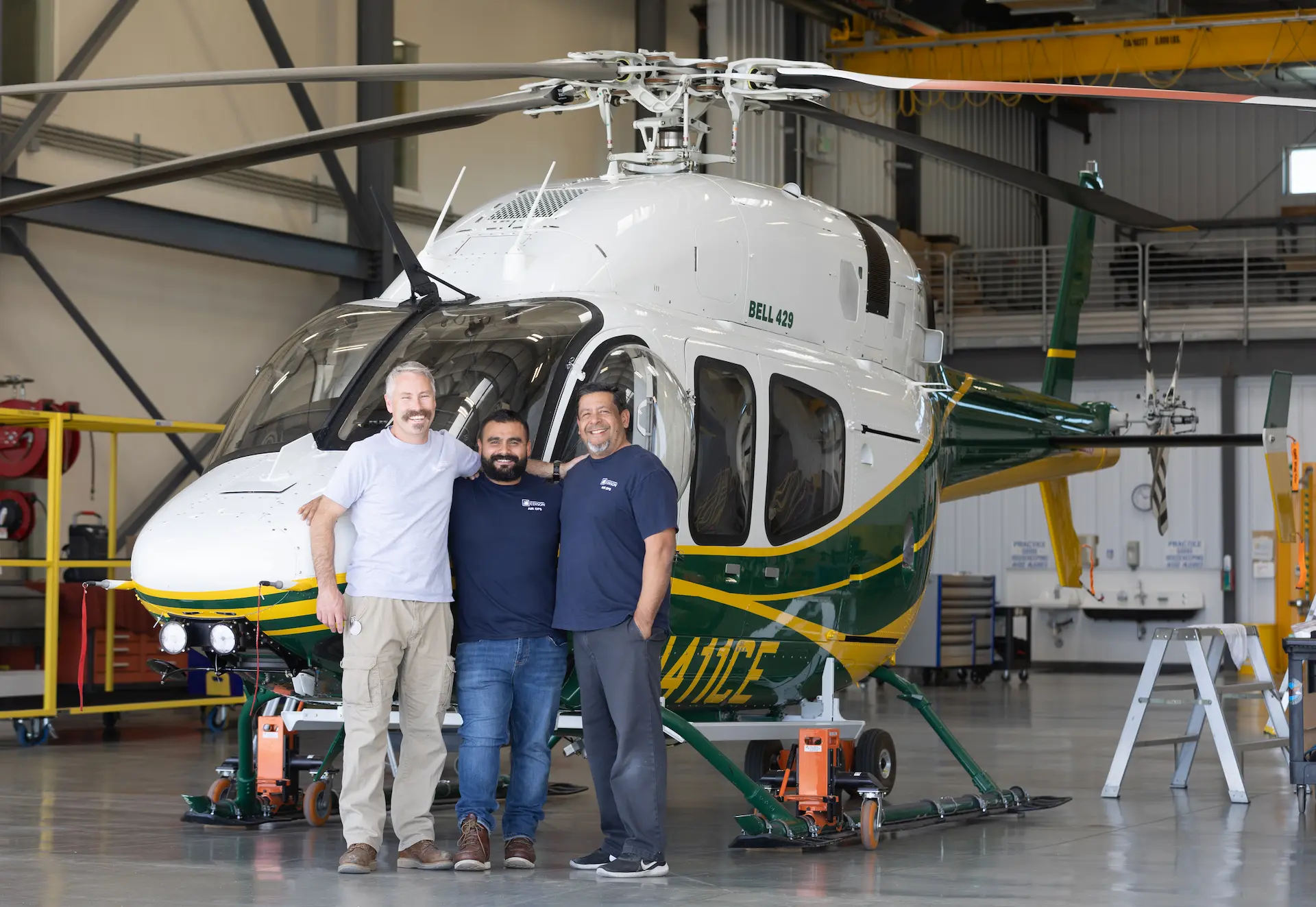
It is unlikely that many electricity consumers or customers understand the complexities of electrical distribution and safeguarding the continuity of supply. They undoubtedly resent any outages caused by shutdowns or wind and fire events, but if they understood what goes on out of their sight to protect the network, one suspects they would be far more appreciative of the committed resources, and would be far more tolerant of short-term outages that can prevent much longer power cuts resulting from extreme events. Customers in Southern California can count themselves lucky that SCE fields a professional, modern and well-equipped flight department to support its massive network.
